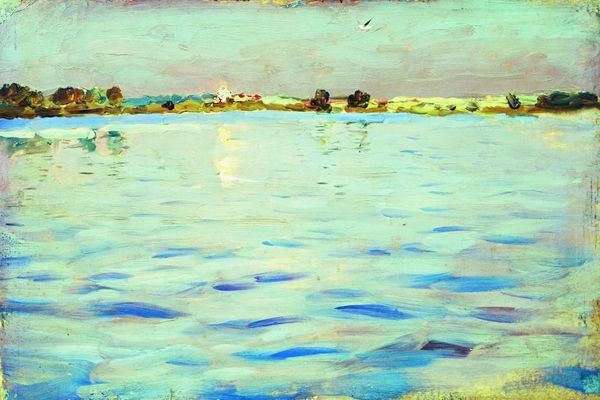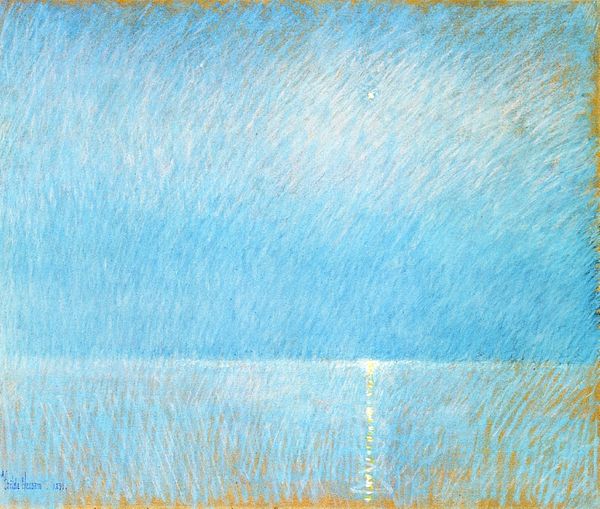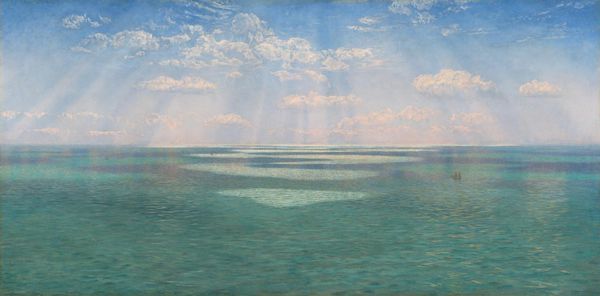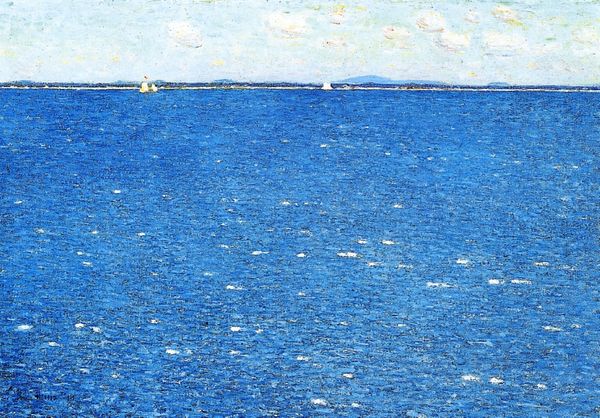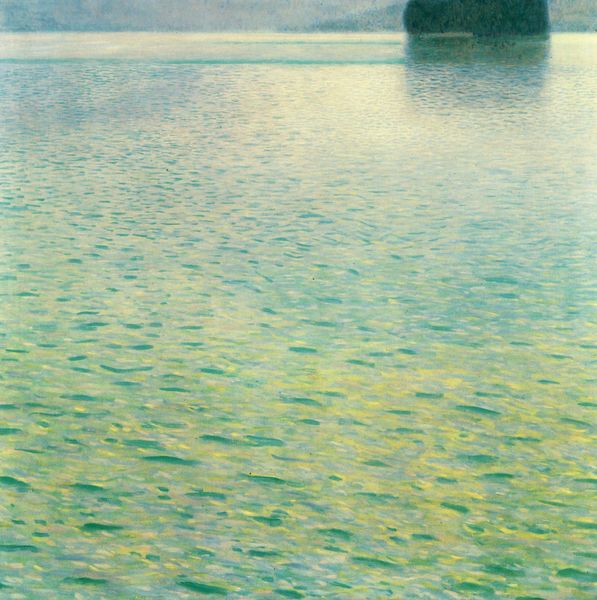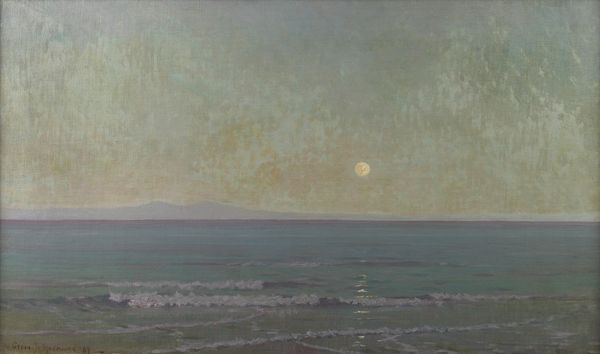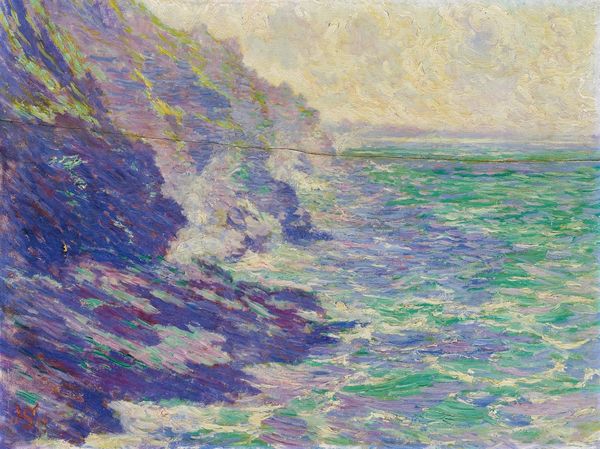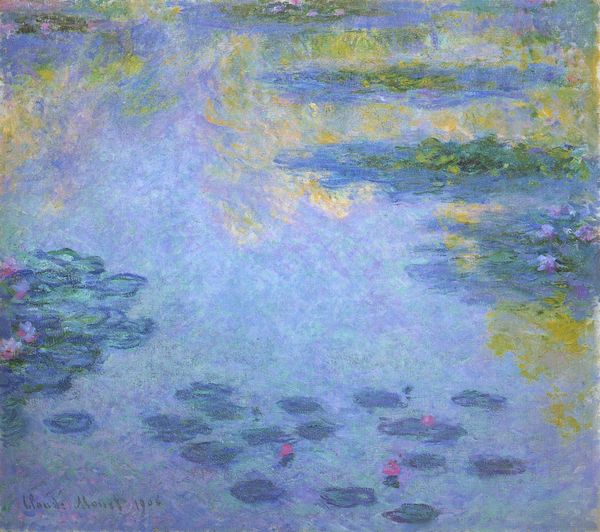
Copyright: Public Domain: Artvee
Curator: Well, isn't that calming? Like a memory half-forgotten. Editor: Indeed. What we have here is Gustav Klimt’s "Attersee," painted around 1900. An oil painting, naturally, showcasing his explorations into landscape, moving, as you can clearly discern, toward modernism. Curator: It's more than landscape, though, right? It’s that dazzling teal! It almost vibrates, the way the colors reflect, pulling me right into the surface. It reminds me of being a kid, peering into a swimming pool. Editor: The surface tension is definitely key. Look at how Klimt breaks down the visual field. He is not trying to perfectly recreate Attersee Lake but instead focuses on capturing the play of light and the sensation of being near the water. The rhythmic application of paint draws heavily from pointillism and emphasizes the optical experience. Curator: So less about what's there, and more about how we feel being there? The blurry shoreline...almost a dream-like quality. I think that resonates, given when he painted it. Pre-war Europe, full of both excitement and dread. It feels like looking into a beautiful void. Editor: Precisely. Art Nouveau was obsessed with surface decoration and formal elements. I feel the looming presence of symbolism lurking within. That water might mirror more than just light; it reflects a world on the verge. Curator: Oh, I can see that. It makes me want to dive right in, anxieties and all. Thanks for the insight; it really brings a new perspective to the way I interpret its surface. Editor: My pleasure. Analyzing its stylistic context allowed us to navigate the liminal space between beauty and premonition within this gorgeous work.
Comments
No comments
Be the first to comment and join the conversation on the ultimate creative platform.
